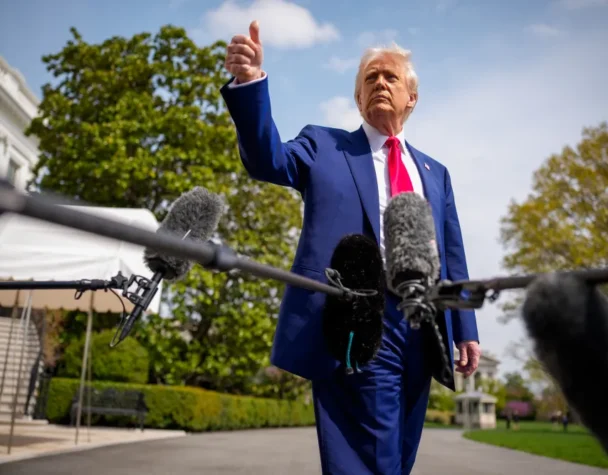
Global Markets Plunge Amid Sweeping U.S. Tariffs and International Retaliation
Thu, April 10, 2025As of April 10, 2025, global markets are under severe pressure following the United States’ imposition of sweeping tariffs on imports from 185 countries. The bold trade policy move by President Donald Trump has triggered widespread backlash, disrupted global supply chains, and sent shockwaves through equities, commodities, and currency markets.
U.S. Tariff Surge Shakes Global Trade Order
On April 9, President Trump announced sweeping tariffs that dramatically escalated trade tensions. The new policy imposes a blanket 10% tariff on most imports, with some countries facing significantly steeper penalties. Chinese goods, already under heavy scrutiny, were hit hardest — now facing a total tariff burden of 104% after an additional 50% hike. European Union goods were taxed at 20%, while Indian exports saw a 26% increase.
These tariffs mark one of the most aggressive trade moves in recent U.S. history. In response, China retaliated almost immediately with an 84% tariff on all American imports, accusing the U.S. of “unilateral bullying.” The European Union, India, and other trade partners swiftly followed suit with countermeasures, setting the stage for a full-blown trade war.
President Trump later announced a 90-day pause on most tariffs—excluding Chinese imports, which saw duties increased further to 125%—claiming it was a tactic to “bring competitors to the negotiating table.” The announcement briefly buoyed Wall Street, but markets remain on edge. Read more on Business Insider.
Markets Tumble and Global Recession Fears Rise
Stock markets have reacted sharply to the tariff shock. The S&P 500 has dropped more than 15% year-to-date, with the Nasdaq Composite nearing a 21% decline. The Dow Jones Industrial Average also saw steep losses, wiping out much of the past year’s gains.
European markets are also feeling the pain, with luxury labels like LVMH and Kering experiencing sharp drops amid concerns about higher export costs and waning consumer demand. Analysts now predict a 2% contraction in global luxury sales for 2025, reversing earlier growth forecasts. Reuters reports on the impact to luxury markets.
Economists warn the tariffs could accelerate inflation, disrupt supply chains, and put further pressure on consumer spending. As companies raise prices to offset higher import costs, fears of stagflation—a toxic mix of slow growth and rising prices—are resurfacing.
The International Monetary Fund is expected to revise its global growth forecast in the coming weeks, as mounting trade frictions and market volatility undermine confidence.
With international relations fraying and economic indicators flashing warning signs, investors and policymakers alike are bracing for what could become a prolonged and painful chapter in the global economy.

